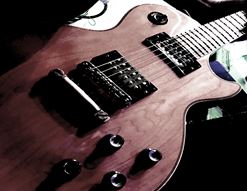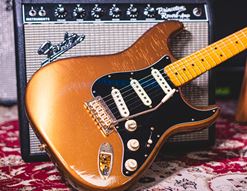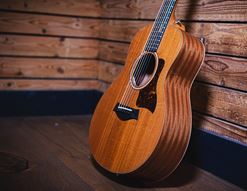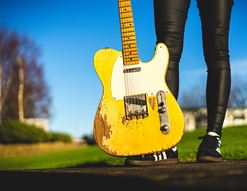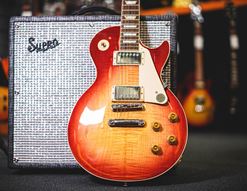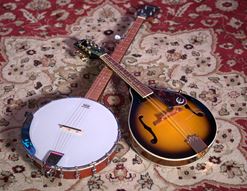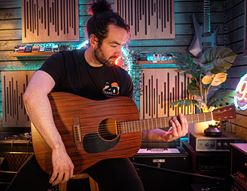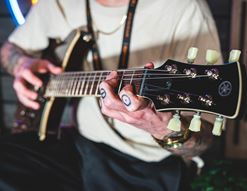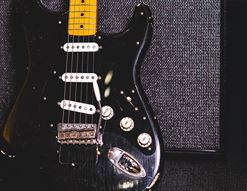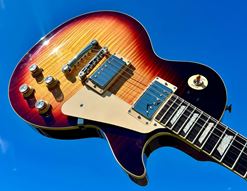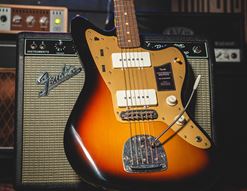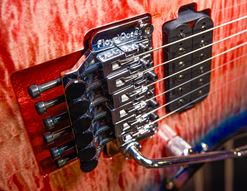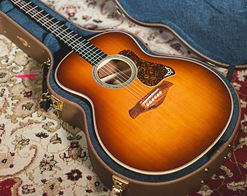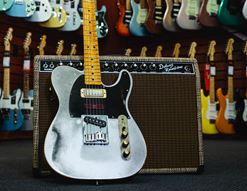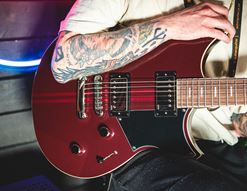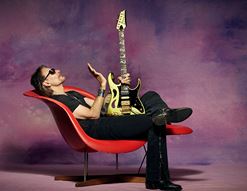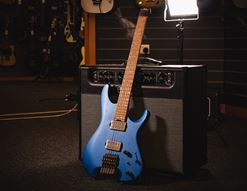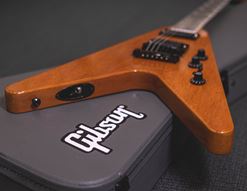Ahoy there, vocalists! Are you looking to buy your very first microphone? Please take a second and read this special guide, because it will arm you with all of the knowledge you’ll need to be confident in making a good microphone choice.
I’ve sold mics for years, and I’m also a performing musician who uses them regularly, so you can trust me to give you the facts, and some advice based on actual experience. I’ll explain all of the major terms and guide you towards the most suitable choice for your needs, and your budget.
Sound good? Alright, get yourself a brew and join me for five…
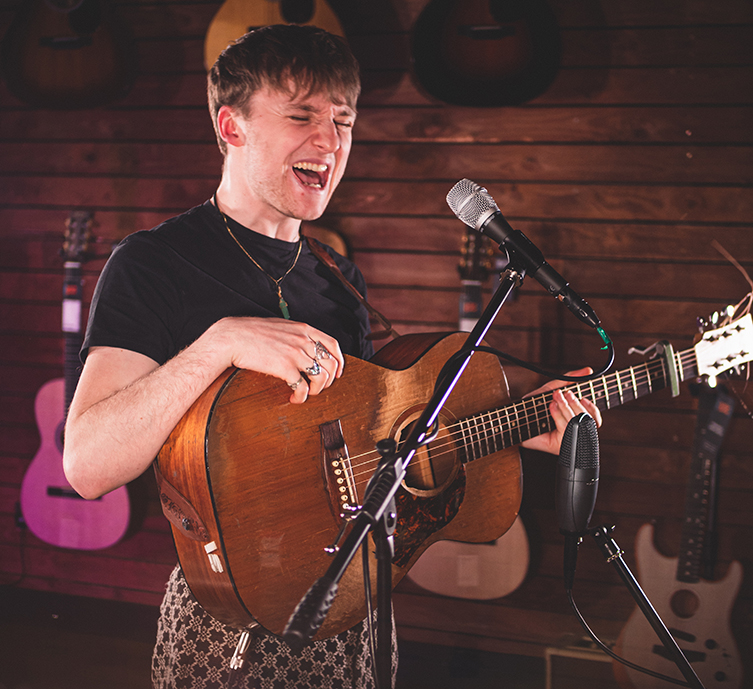
Contents
Choosing a Condenser Microphone
What are Your Goals?
The first thing to determine, before we even chat about mics, is what your intentions are. Do you need a mic for singing live? Do you want one for recording at home? If so, are you recording instruments, vocals, or both?
Do you want to do it all? Answers to these questions will help you as we navigate the subject. Different microphones have different qualities, strengths and weaknesses. Knowing what you want to do will make it easier to match the correct mic to the correct goal.
Microphone Types
I’m keeping it simple and straightforward today, so while there are a number of microphone styles out there in the world, I’m going to focus on the most popular and well-used types. By all means, investigate ribbon mics and other things later, but right now, there are two main types of microphone that you need to know about: dynamics mics and condenser mics.
- Dynamic mic: used both on stage and in the studio. Dynamic mics are passive, so they do not require any extra power in order to work. Dynamic mics are used for a wide variety of tasks.
- Condenser mic: more sensitive than a dynamic mic, therefore will capture a richer and more detailed amount of audio. Requires extra power (see Phantom Power below) to function. Mostly a studio mic but certain condenser mics can be used on stage.
At the heart of it, these are the main styles you need to know about. In an ideal world, you’d have a condenser mic for recording, and a dynamic mic for performing. If you can do that, great! If not, I’ll tell you what I think will work well for you by the end of the article.
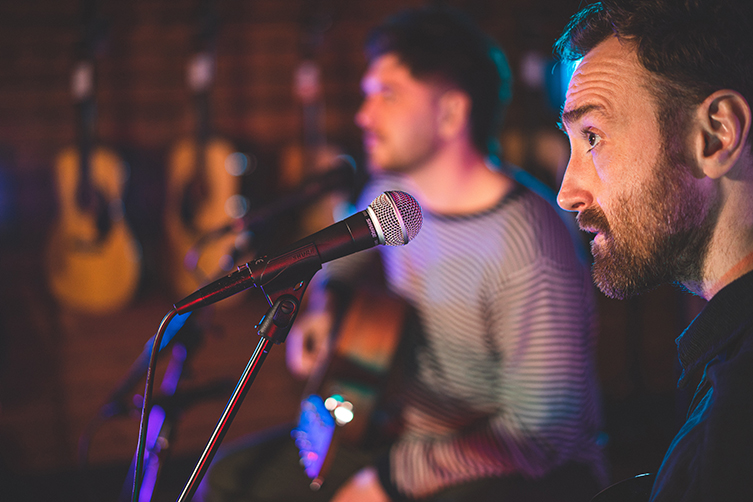
Polar Patterns
What is a polar pattern? A polar pattern is a description of the area around a mic that will pick up sound effectively. Some mics are more selective about what they pick up than others. Microphones vary quietly widely in this respect, so it pays to know what you need. I’ll go through each of the main patterns and then advise you on what might be the right way to go for you.
Omni: Omni, or omnidirectional mics, can pick up sound effectively from a full 360 degree area around the mic. Very handy in certain applications (recording ambiance, groups of people, subjects that are moving around etc), but for what I suspect you want to achieve, it’s probably best not to go for one of these. You want to limit the extra sounds coming in from extraneous areas as much as you can, if you are recording vocals and instruments.
Bi-Directional: These can also be called ‘figure of 8 mics’ for obvious reasons. Areas directly in front of, and directly behind the mic is where a bi-directional mic will pick up sound. Obviously, turn it sideways for recording what’s directly left and right!
What are bi-directional mics good for? Person-to-person interviews, and, turned sideways, a vocal duet. Again, too specific for general use in my opinion.
Shotgun: A shotgun mic has a similar polar pattern to a bi-directional mic but that pattern is longer and thinner. It’s more selective and specific, and can capture detail from further away, too. You’ll see film and documentary crews using these to pinpoint sound from certain sources and reject the rest.
Cardioid/Super Cardioid/Hyper Cardioid: These all refer to versions of the same thing. Most of the mics you’ll be using will have a form of cardioid polar pattern. Cardioid mics in particular reject all of the sound from behind them, so they are great for vocals and instrument recording. This minimises unwanted noise from the atmosphere getting picked up, and that is exactly what you want!
Super cardioid is slightly less balloon-like in its polar pattern. This can be helpful in situations like, say, picking up lead vocals on a stage but not the pair of monitor wedges at either side of the mic on the floor.
Hyper-cardioid mics work in the same way but are even more focussed, so they’d be good to use on a loud stage where a lot of other sound sources need to be rejected by the microphone.
Does that all make sense? Each polar pattern is not better or worse than another, it just has a particular use. My advice here is to go for a cardioid mic. You can specialise on different styles later on, once you become more acquainted with it all, but you’ll always need a good cardioid mic.
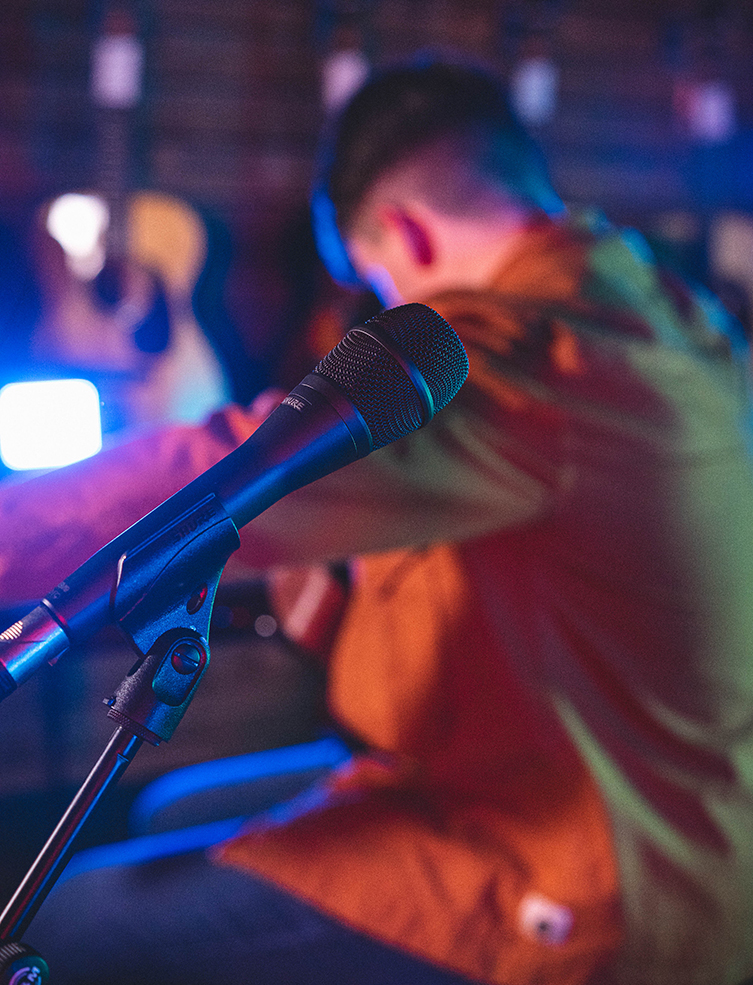
Phantom Power
What is phantom power? It sounds very cool, but it’s really just a simple little bit of extra voltage sent through the system (normally from either an audio interface or a mixing desk) to give juice to your mic, if it requires it.
Turning on phantom power is normally as simple as flipping a switch on your interface that’s marked “+48v”.
How do you know if your mic needs it? Well, the good news is that sending phantom power to a mic that doesn’t need any will not hurt that mic, so don’t worry! Almost all condenser microphones require phantom power. Almost all dynamic mics do not. That’s your rule of thumb!
Choosing a Condenser Microphone
If you plan to record instruments and vocals at home or in a studio, I recommend going for an affordable condenser microphone. These mics will deliver more detail and give you a richer, more professional sounding recording. Now, microphones can get to be very expensive, but as I always say, you don’t have to spend a million bucks to sound like a million bucks. Here’s three choices, all of which are different levels of affordable:
- Audio Technica AT2020: very cost-effective, and from a trustworthy brand. It has a large diaphragm (the part that picks up sound), so you can get plenty of detail in there, and it has a cardioid pickup pattern, which is what we want!
- SE Electronics X1 A: another very affordable and highly effective condenser. SE have made this very rugged indeed! It’s one of those mics you can throw in front of anything and expect a good recording from. Very impressive price point, too!
- RODE NT-USB: This is such a simple and affordable way to get good results! It’s USB powered, and definitely aimed towards the podcast market (which you may very well be here for!) but this mic is great for all applications. Rode are one of the big guys, and they always deliver.
Choosing a Dynamic Microphone
If you plan to sing live, I think you should prioritise a dynamic mic over a condenser. A decent dynamic mic is still absolutely good enough to use for recording, particularly since most of us use EQ and compression to tweak our recordings anyway!
Dynamic mics don’t need any phantom power in order to function, and their slightly less sensitive design often works in their favour: live stages, for example, are not places for condenser mics, but you can have dozens of dynamic mics up there!
Here’s three, starting with the most famous one of them all…
- Shure SM58: I’m going to be bold and say that this is the mic you should buy first. In all my years as a musician, producer and performer, there has never been a time when I wasn’t glad I had an SM58 handy. You can do anything with this mic, and it’ll deliver the goods. Vocals, guitar amps, instruments, live work…an SM58 is always able to get you there! Spend more and you’ll get more detail, absolutely, but this is the number one ‘trusty spanner’ in your toolbox.
- Sennheiser E906: This is an excellent mic to use if you are recording lots of guitar speakers. It has a bright and tight sound, which is ideal for capturing the response of the guitar. It’ll work great with vocals too, and it actually feels great to sing into the square shape!
- Shure Beta 58: This is thought of as an upgraded SM58, and in many ways it is, but it’s a different mic, really. It’s also superb, with a supercardioid pattern (cuts out more unwanted sound) and has a greater dynamic range, so you get a richer sound. The Beta 58 has more output too, which is useful for live purposes and is, as I can personally relate, very tough in terms of build quality too!
One Mic to Rule Them All
There are lots and lots of microphones out there. There are lots and lots of opinions out there. What I would say, in rounding up, is that if you were to buy one microphone today that needed to be able to handle almost any task, then I would recommend a dynamic mic with a cardioid polar pattern.
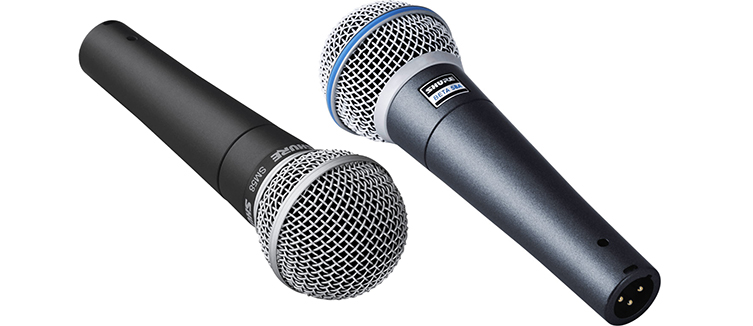
Being more specific, I would trust the decades upon decades of practical proof that’s out there and go for a Shure SM58. If I had a little more cash, I would consider spending it on the Shure Beta 58. If money was an issue, I’d buy a dynamic mic with a cardioid polar pattern that costs less, like for example the Shure PGA48, the Sennheiser E835 and in particular the SE V7 mic, which I think performs far beyond its price point.
I think you’ll get loads of use from such a mic, and from there you can start to develop your own preferences. It’s a competitive market, and whilst I’m by no means being sponsored by Shure for this blog, their stuff sounds good, it’s solid and it’s reliable. That’s what I need from my mics!
Whatever you end up choosing, make sure it does what you need it to do, and have tons of fun with it!
Click to View our Best Microphones for Beginners


